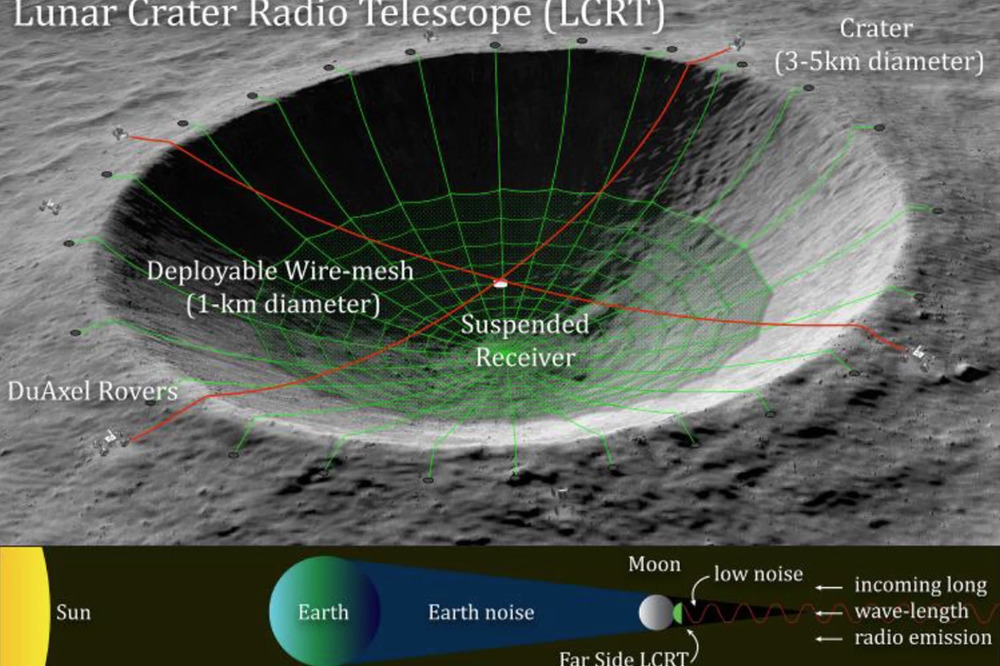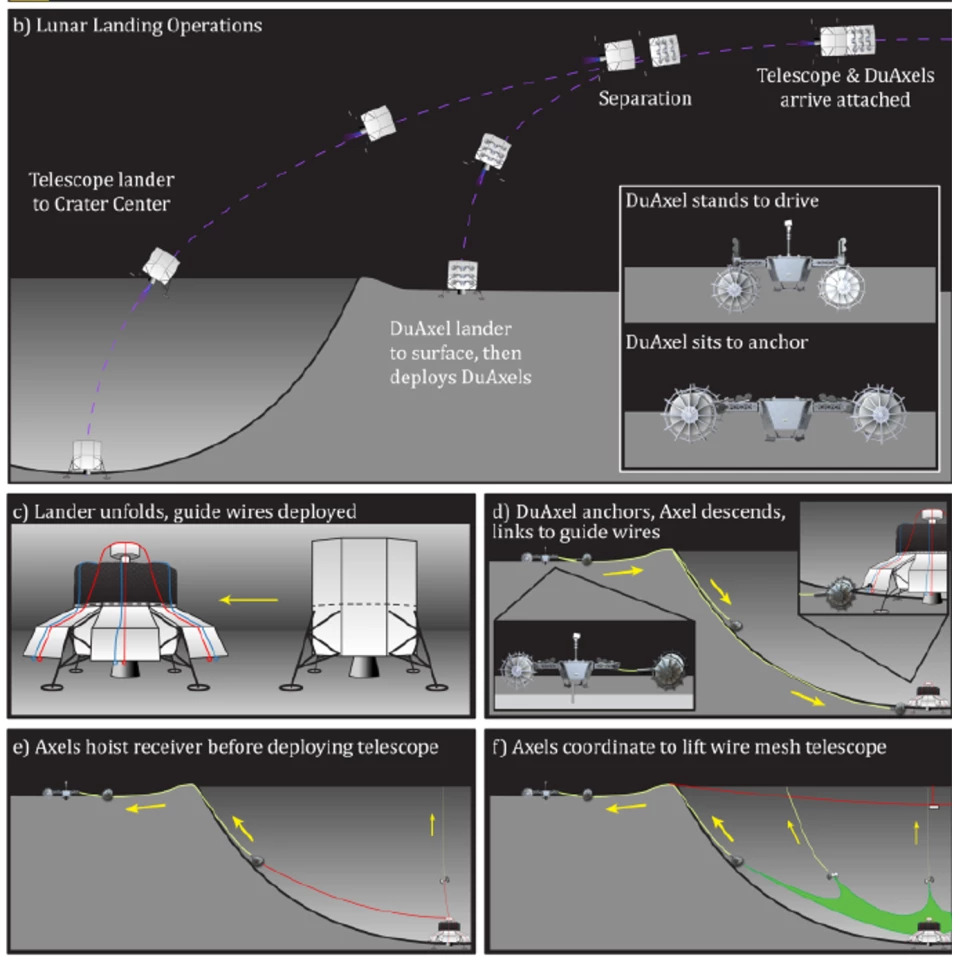Tau.Neutrino said:
NASA funds concept for gigantic radio telescope on far side of Moon
NASA is exploring the potential of building an enormous radio telescope on the far side of the Moon in a vast, hollowed-out crater. The telescope’s reflector would be comprised of a 1-km (0.6-mile) diameter wire mesh that would be pulled into place by wall-climbing robots.

Yippee, that’s great news. I note with delight Rump’s complete 180 degree turnaround about NASA.
Resolution would not be anywhere near as good as the Whole Earth Telescope. But that’s not the point. The whole Earth is bathed in radio interference AND the ionosphere blocks a heap of wavelengths AND the van Allen belts generate and block frequencies, too.
Perfect for short wave radio, 3–30 MHz (100 to 10 metres).
For reference, the Russians launched a radio telescope into space, called Spektr-R, in 2011. This was 10 metres in diameter, way smaller than the proposed new telescope. It’s apogee is 390,000 km. Hey, the distance to the Moon is 384,000 km. That’s virtually identical. “On 11 January 2019, the spacecraft stopped responding to ground control”.
The deployment method should work. I’d actually use a slightly different method. I’d deploy guide wires at separation, then walk the ends around the crater rim. My method is more straightforward, a faster build, but has much more risk of fouling on lunar rocks. Yeah, OK, their method has big advantages.
